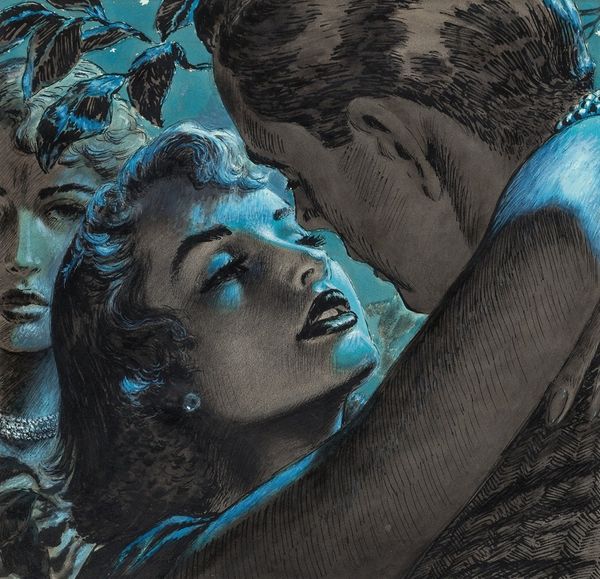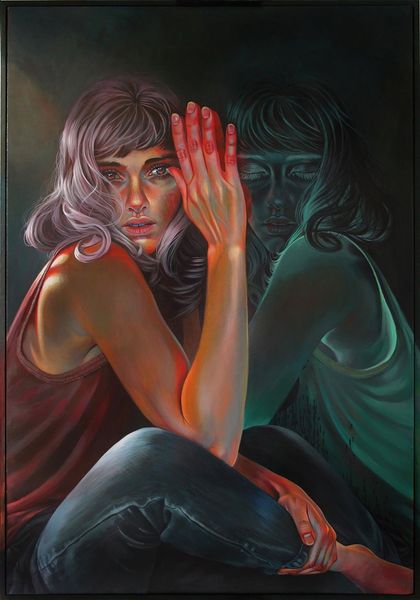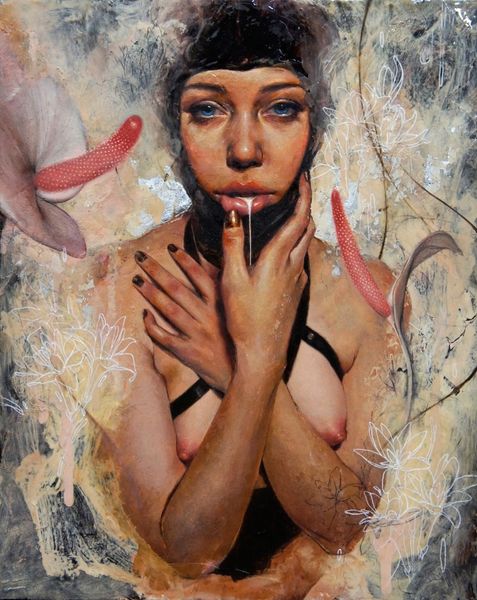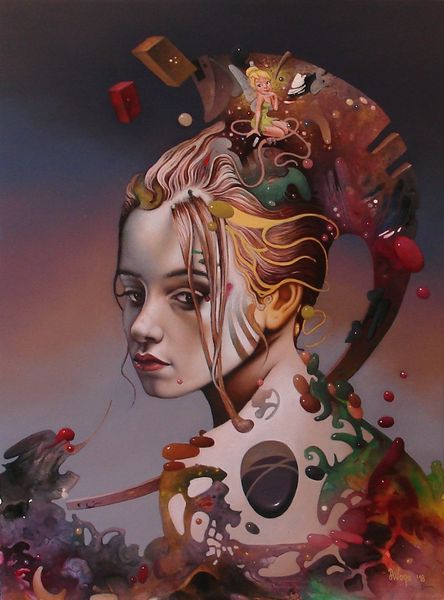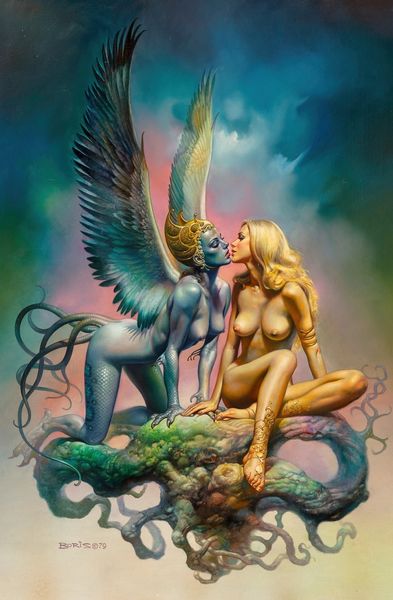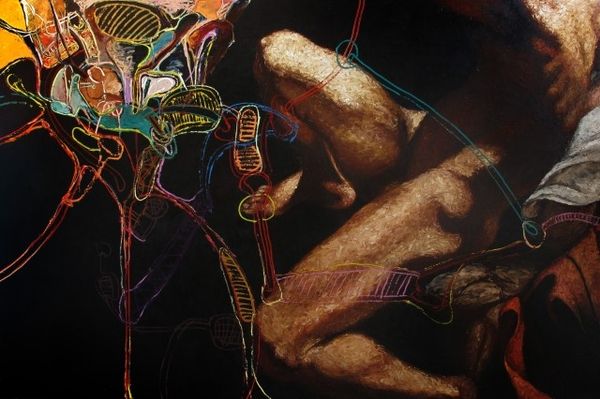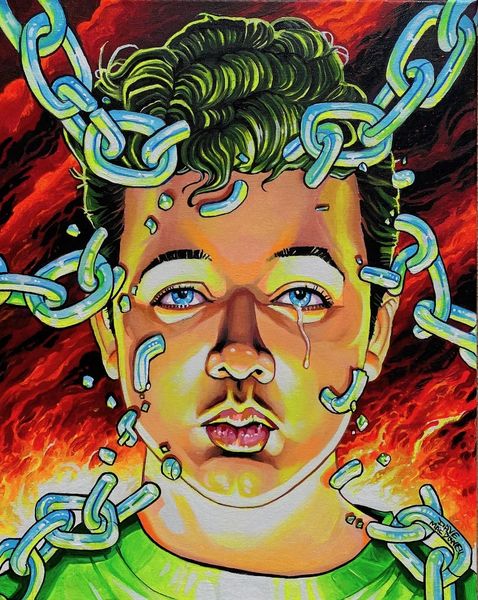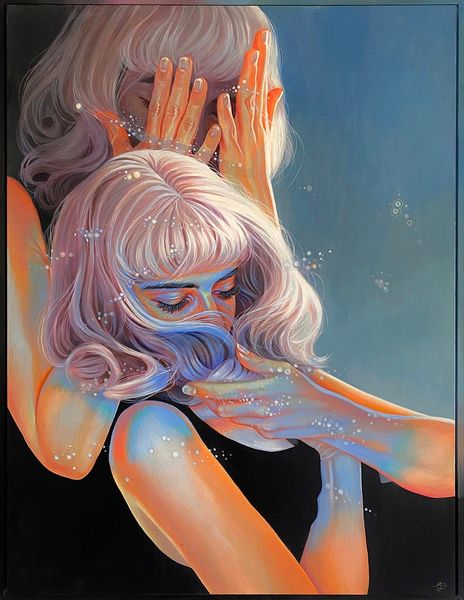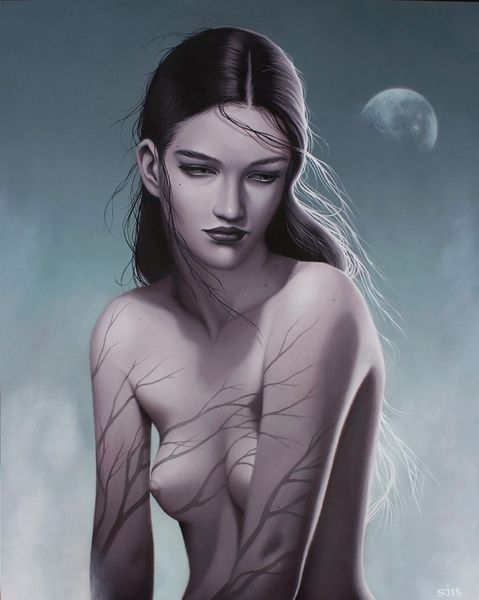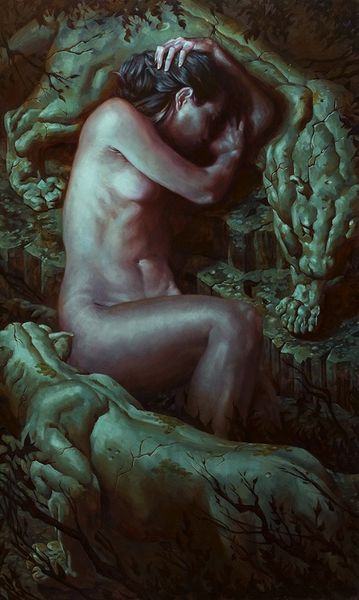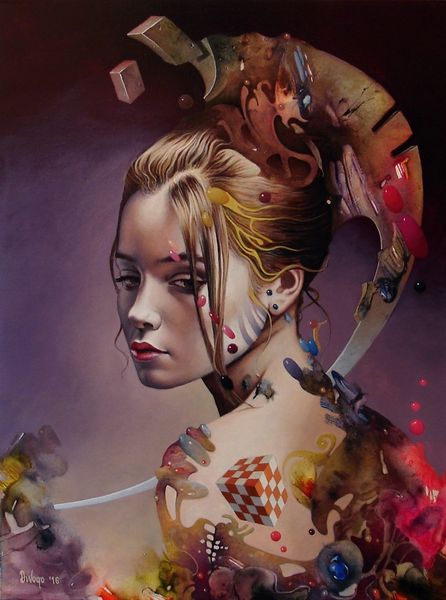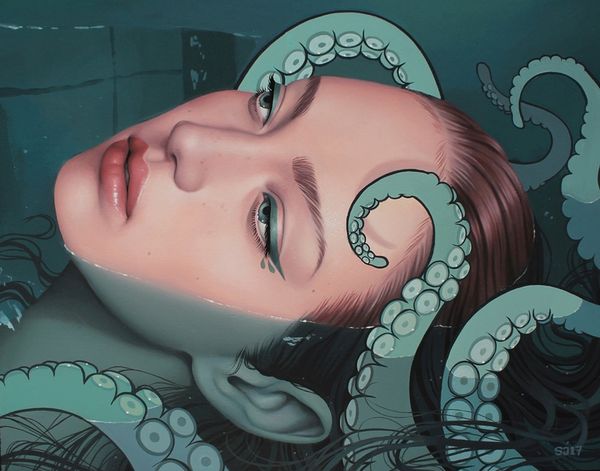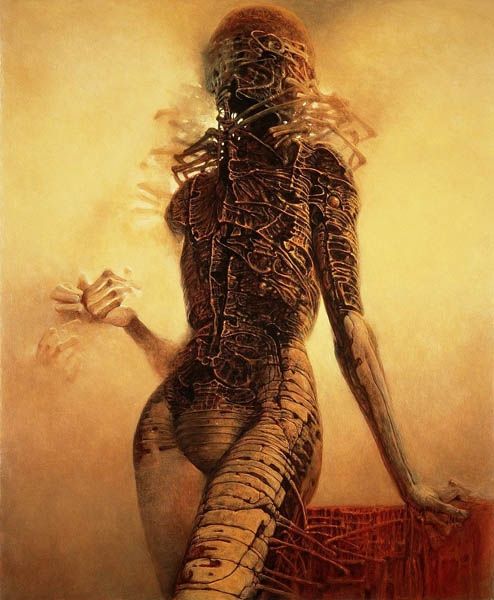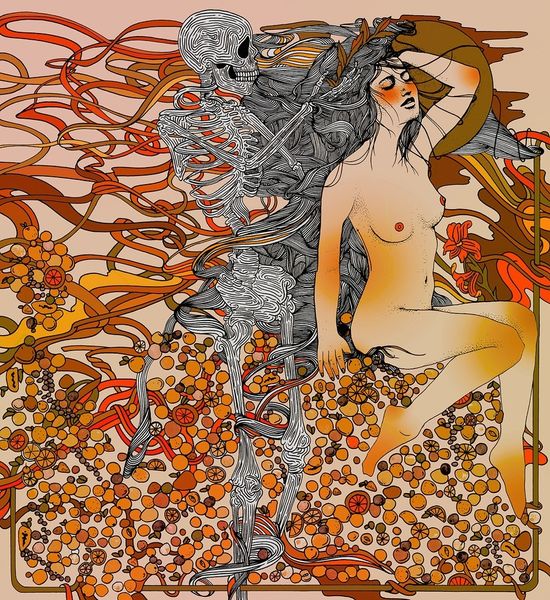
painting, acrylic-paint
#
portrait
#
pop-surrealism
#
narrative-art
#
painting
#
caricature
#
acrylic-paint
#
figuration
#
surrealism
#
portrait art
#
realism
Copyright: Modern Artists: Artvee
Curator: Oh my. The intimacy is suffocating. I am instantly uncomfortable. Editor: Then Dave Macdowell's acrylic painting "Feed My Frankenstein" is certainly having its intended effect! What strikes you as the source of discomfort? Curator: Look at how the Bride figure looms in the background. She is the classic image, but her expression, even the set of her lips, it’s like she’s waiting. Impatient, even. And her hands! The bright red fingernails... She is manipulating his face! He's just...a canvas. The passivity is jarring. He looks like a discarded doll that she can modify as she wants. It makes me think about ownership, and control. It evokes deeply entrenched patriarchal dynamics turned inside out. Editor: I agree. What's so interesting about Macdowell's painting is how it plays with archetypes that have evolved through so many cultural interpretations. In cinema and popular culture, the Frankenstein myth, originating from Mary Shelley’s gothic novel, has become ripe for interpretations and revisions. Think of Elsa Lanchester's iconic portrayal of the Bride! She was frightful but sympathetic. Here, Macdowell gives us something far more unnerving: an almost gleeful anticipation, an absolute manipulation of the monster. She’s not giving life; she’s rearranging it to suit her desire. This makes me think about the contemporary discussions around authorship, the male gaze and the ethics of creation itself. Curator: And the blood…! It feels like a grotesque act, perverting the life-giving act of motherhood, instead turning it into this brutal reshaping. Macdowell clearly subverts our expectations, challenging conventional portrayals of the feminine. Red fingernails indeed! The painting isn’t just horror; it's a statement on control. Editor: That's insightful. Seeing "Feed My Frankenstein," in a broader context, it encourages questions about whose narrative holds prominence in cultural memory and who dictates those narratives. Perhaps Macdowell challenges viewers to critically engage with the imagery they think they know, asking who the real monsters are. Curator: Indeed. This piece isn’t just about Frankenstein; it's a mirror reflecting back our own complex cultural biases and fears. Editor: I agree entirely. "Feed My Frankenstein" lingers, prompting essential re-evaluation.
Comments
No comments
Be the first to comment and join the conversation on the ultimate creative platform.
